Copying vs Repetition: Why One is Boring and the Other Essential |
The tour bus wheezes into the parking lot at the scenic overlook. It decompresses tiredly and disgorges a thin stream of tourists which fans out along the railing in a ragged line. Click! Cameras held aloft capture the view, sometimes with a couple posed in the foreground and smiles pasted in place. Within minutes, the visitors climb back on the bus; it grumpily sputters to life and groans its way out of the parking lot.
Not many of us would think that what the tourists are doing is creating art. If asked, the tourists themselves would probably say that they are taking a picture so that they can remember the place or show friends and family back home a record of where they have been. That is the result of this pixel harvesting: a record. The tourists are documenting an experience of or encounter with a beautiful location for future reference. They are here because images made before their arrival captured a place that was deemed worth visiting.
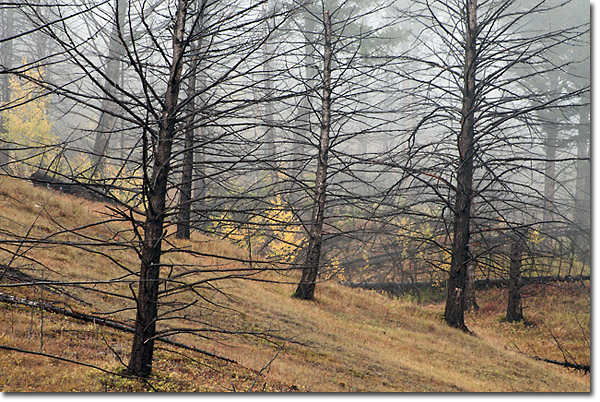
But it is not only tourists who flock to a location after seeing a beautiful image. Photographers are equally guilty of trying to 'bag' a location. What is the difference between a tourist and a photographer then? For me, a person who calls themselves a 'photographer' is doing more than just making a record. A photographer uses a camera to translate some kind of personal connection, or reason why the subject is important, to a viewer. In short, they create art. Entire books have been written in an attempt to pin down the nature of 'art' and I do not intend to add to that debate here. But I think we can safely skirt the deeper waters by venturing that most art has some energy or expression that is unique to its maker. In other words, art is special and not a copy of some other artist's vision.
Photographers are guilty of copying more so than the average tourist, or at least guilty of pretending that they are not copying something they saw somewhere before. There is nothing inherently wrong with copying. Artists have been copying each other's works, and building on what went on before, for centuries. But if your goal is to 'make art', then passing off a photograph that is a mere riff off another image you have seen is not going to get you there. Plus, it is boring to see the same shot again and again. As a photographer, we ask the viewer to spend time with the vision we present in a photograph. Showing respect for your viewer means not regurgitating imagery that has been done better, elsewhere.
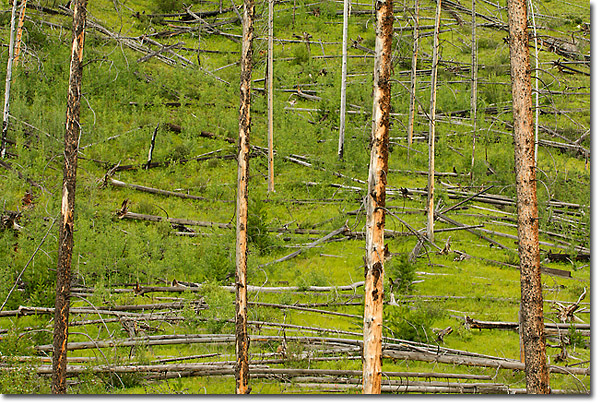
Don't get me wrong, though. I am not advocating that you should never visit a location that has been photographed well before. That eliminates much of the planet! Some photographers—rightly or wrongly—are derisive of the scores of shooters lined up at scenes made iconic by a great photographer. But often what is captured is a pale restatement of a tired theme. The problem lies in visiting a place and hoping to 'see' it the same way as an admired photographer who has been there before you.
On the other hand, there is artistic danger in seeking out undiscovered country as well. If you can't return something artistic from a well-known location, then all you have to do is take a mediocre picture of a remote location! The appeal of these kinds of images lies not in their aesthetic prowess but in their access: if you have a monopoly on supply, value goes up. A photograph of a rare place or species has impact from the fact that it is rarely seen, not necessarily because it is well taken.
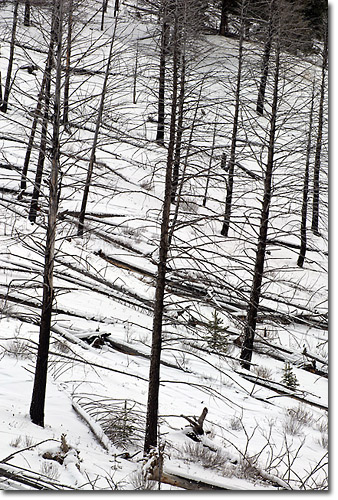
For a photographer trying to create art, copying is a hollow activity that leaves one feeling unfulfilled. It is not about rounding out one's portfolio by having images of key icons nor is it about pulling in front of the herd and being the first person to return photographs of a remote location. True artistic growth comes from finding your voice as a photographer. But how do we tap into this ephemeral energy? How do we tune our ears to hear our muse? If creating lasting, unique artistic images with your camera does not depend on location or access, then what does help in the development of artistic vision? If we turn to the example of painters, we see very common subjects and objects have been painted throughout time, depending on the fashion of the day. It wasn't exclusive access to a kind of paint or location but immersion in the world that is being painted that led down a creative path. The painter portrays her unique interpretation of the world around her. Often, the painter has returned to the same thing and struggled with it again and again and again. Think of van Gogh and his sunflowers, or Monet and his water lilies.
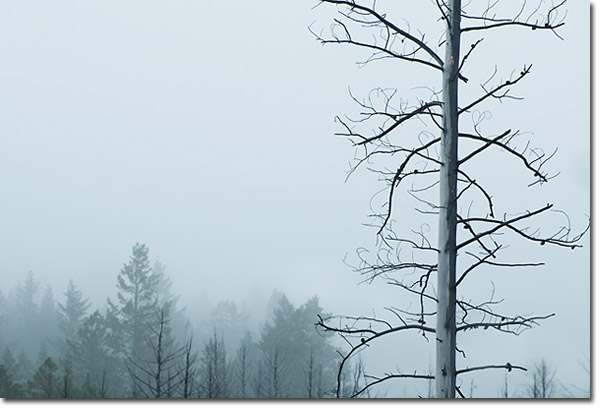
If, as a photographer, you are continually drawn to an area, then listen to that impulse. I head out to the mountains to take pictures, and I find myself always ending up on a short stretch of slow highway that runs parallel to the main thoroughfare carving up the mountain valley. The meandering pace allows me to take in the scenery and I stop, as I always do, at a place where a forest fire burned the lodgepole pine into spiky skeletons. I am fascinated by the graphic lines of nature as well as the contrast between old and new, colour and charcoal that plays out here every day of the year. I photograph the same area again and again.
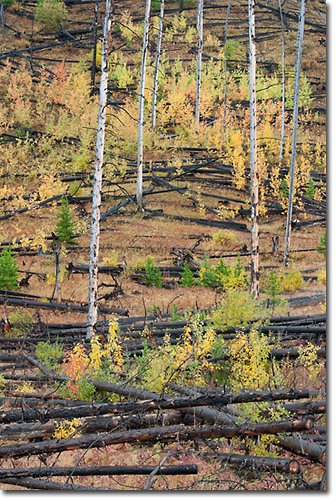
This concept of repetition, as opposed to copying, is one possible avenue to becoming an artist as opposed to a tourist. While doing the same thing again and again does not of itself guarantee spun gold, it does focus the attention and concentration and thereby hone the artistic skill. Repeatedly photographing the same subject matter is akin to meditation on a subject. Layers are peeled back, moods explored and familiarity, even intimacy, results. Through such discipline, depth and refinement in image-making can occur. So, don't be a copycat. You do not need to speed away from a crumbling glacier in the Arctic or slither along a muddy jungle trail to make art. You should deepen your acquaintance with your own locale and look inward to find focus in your art.
Comments on NPN nature photography articles? Send them to the editor. NPN members may also log in and leave their comments below.
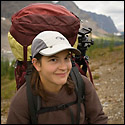 Samantha Chrysanthou was born in Lethbridge, Alberta. After moving for a period of time to northern Alberta, she returned in 2000 to southern Alberta to pursue a law degree in Calgary. After becoming a lawyer, Samantha began to realize her heart was more engaged in capturing the beauty of the landscape around her than debating the nuances of legal arguments in court. She has since left law to pursue writing and photography full-time. She particularly enjoys shooting the prairies, foothills and Rocky Mountains within an hour or so of her home in Cochrane, Alberta. Visit Samantha's website to view more of her work at www.chrysalizz.smugmug.com.
Samantha Chrysanthou was born in Lethbridge, Alberta. After moving for a period of time to northern Alberta, she returned in 2000 to southern Alberta to pursue a law degree in Calgary. After becoming a lawyer, Samantha began to realize her heart was more engaged in capturing the beauty of the landscape around her than debating the nuances of legal arguments in court. She has since left law to pursue writing and photography full-time. She particularly enjoys shooting the prairies, foothills and Rocky Mountains within an hour or so of her home in Cochrane, Alberta. Visit Samantha's website to view more of her work at www.chrysalizz.smugmug.com.